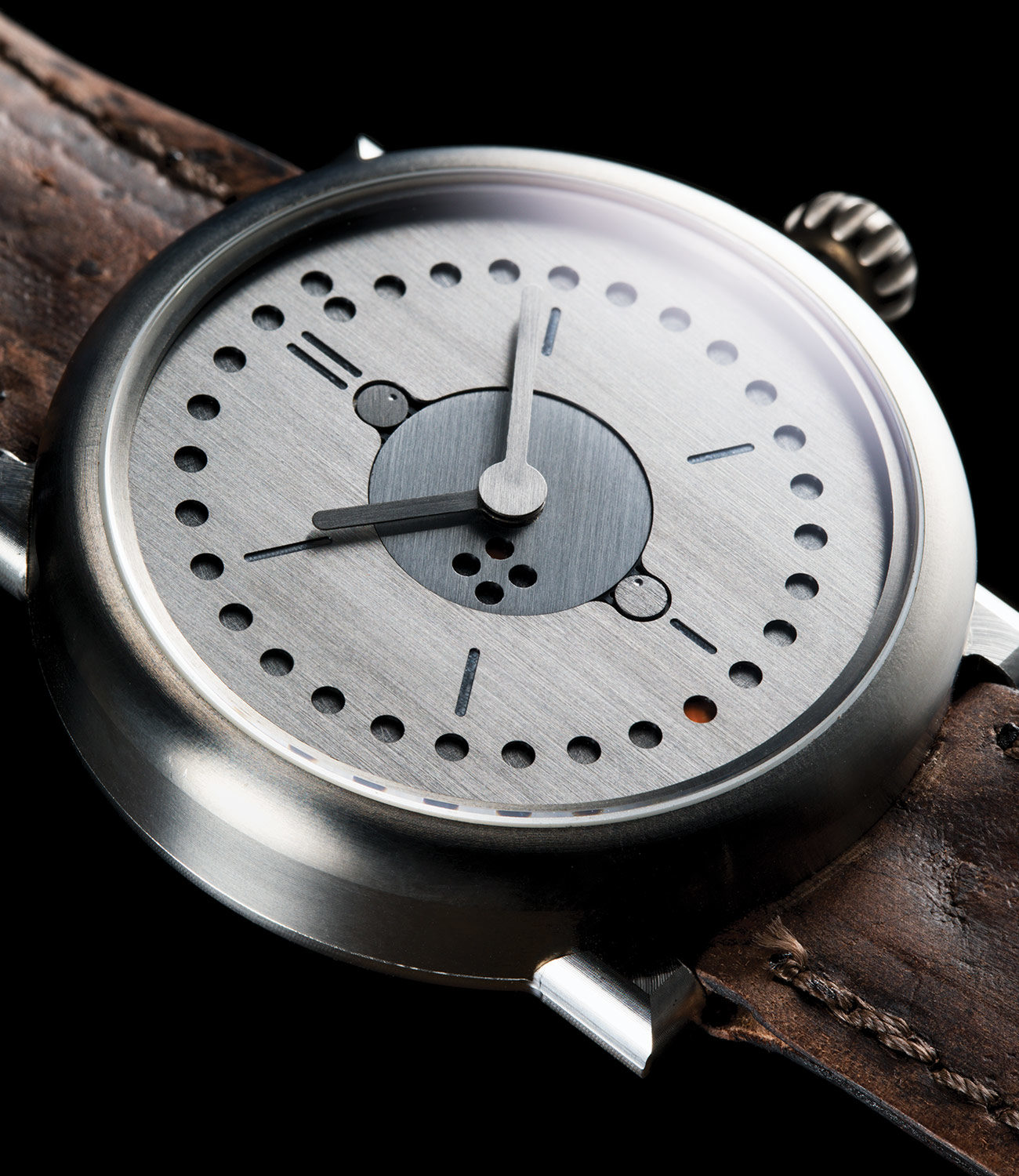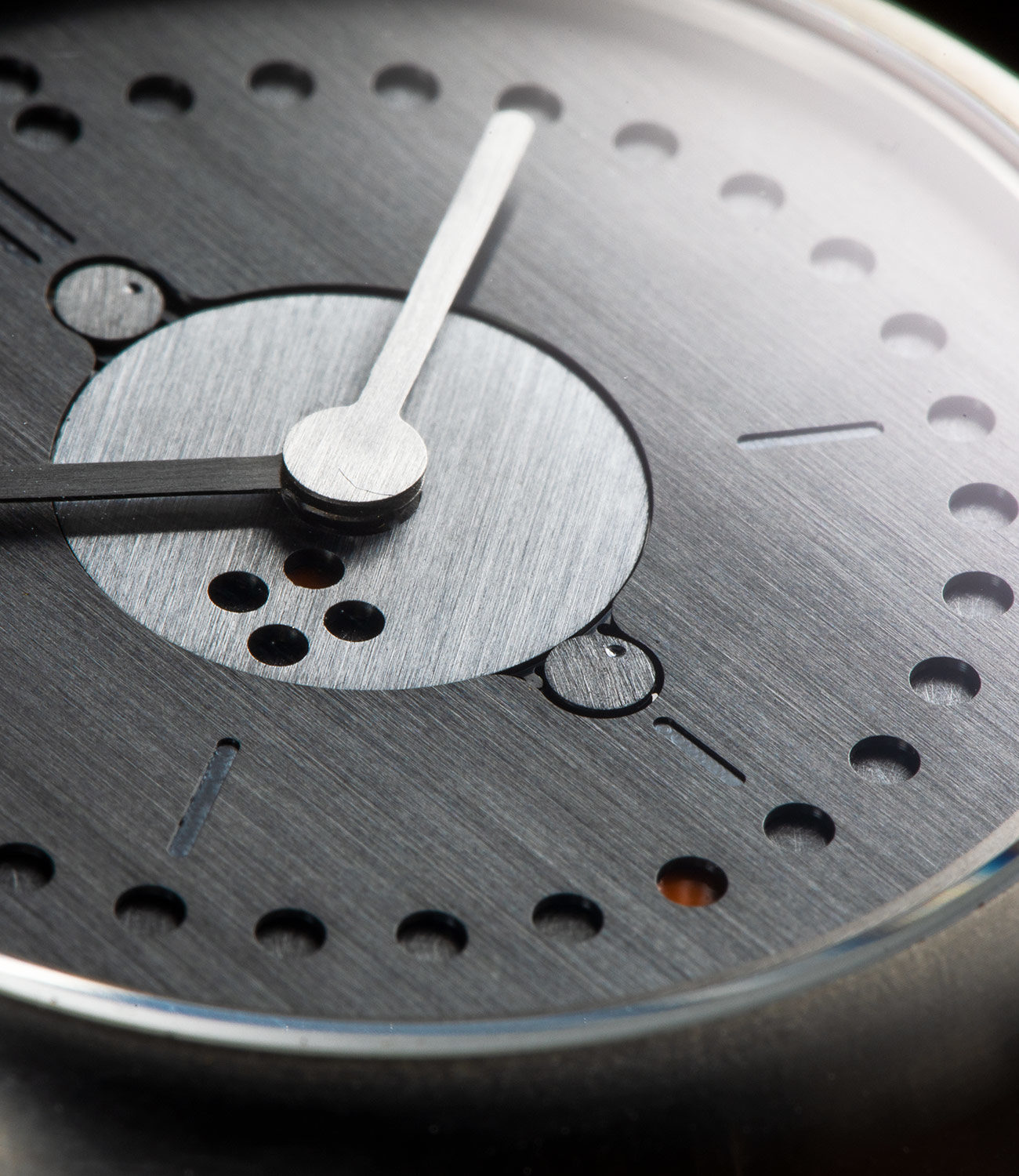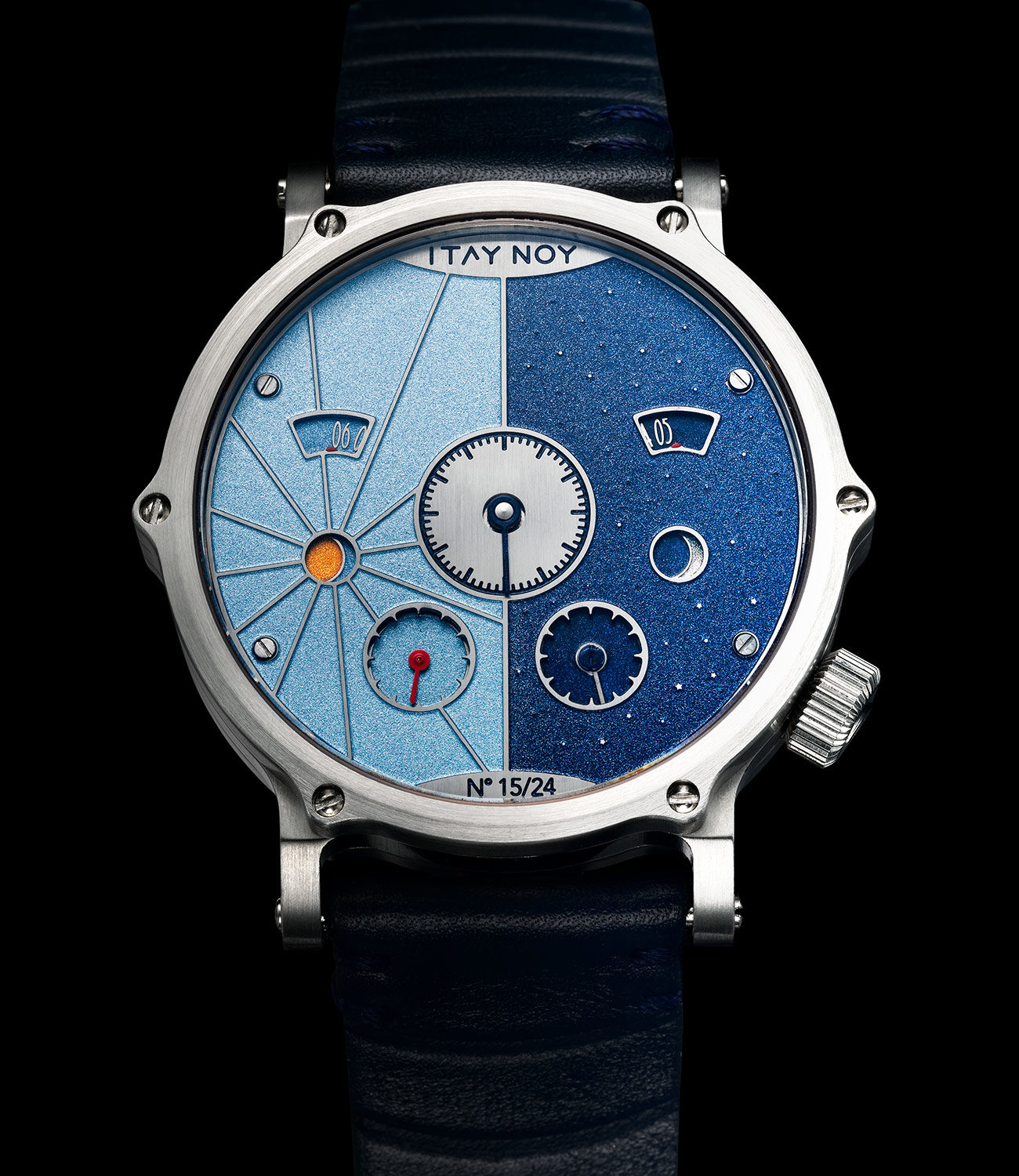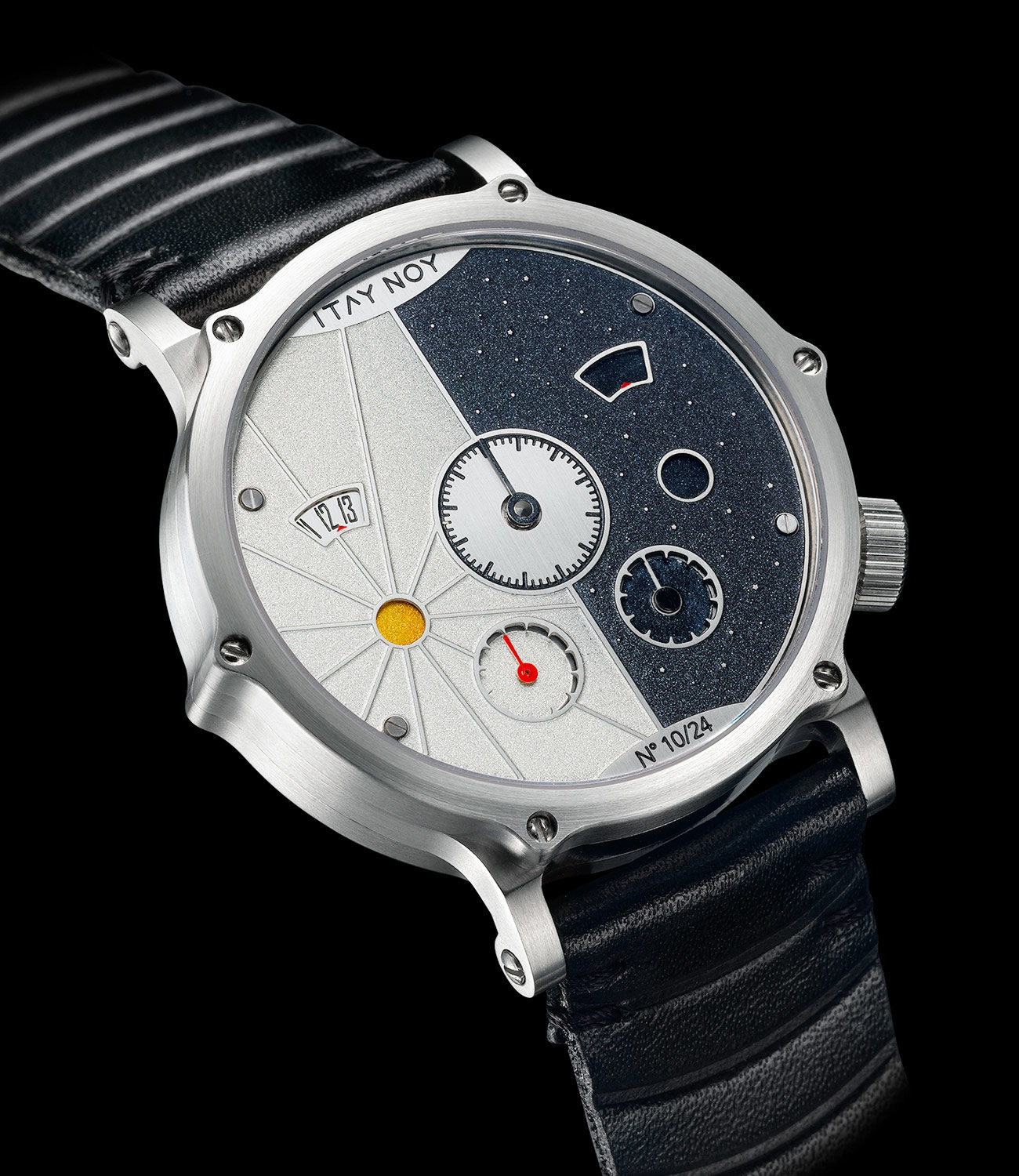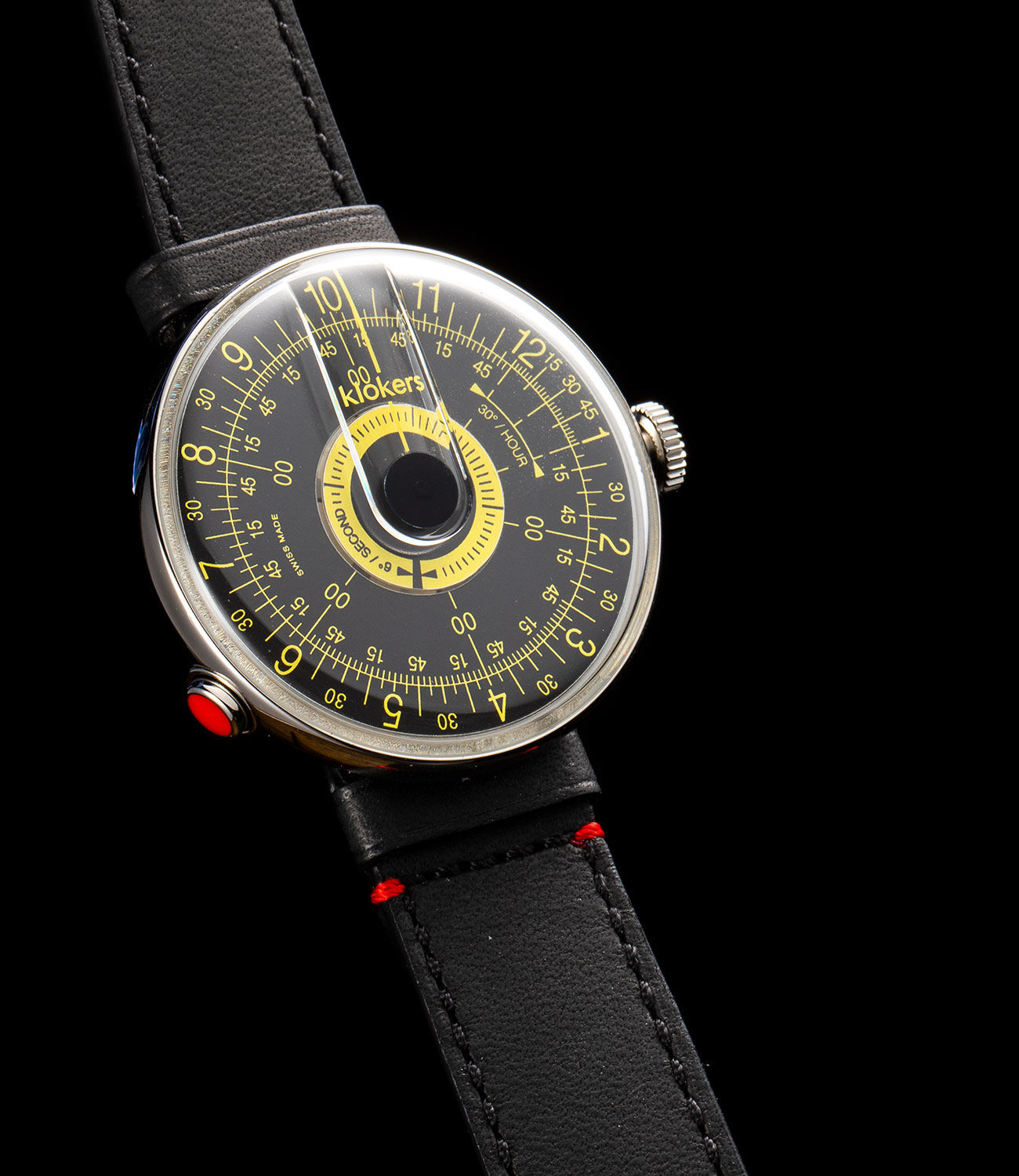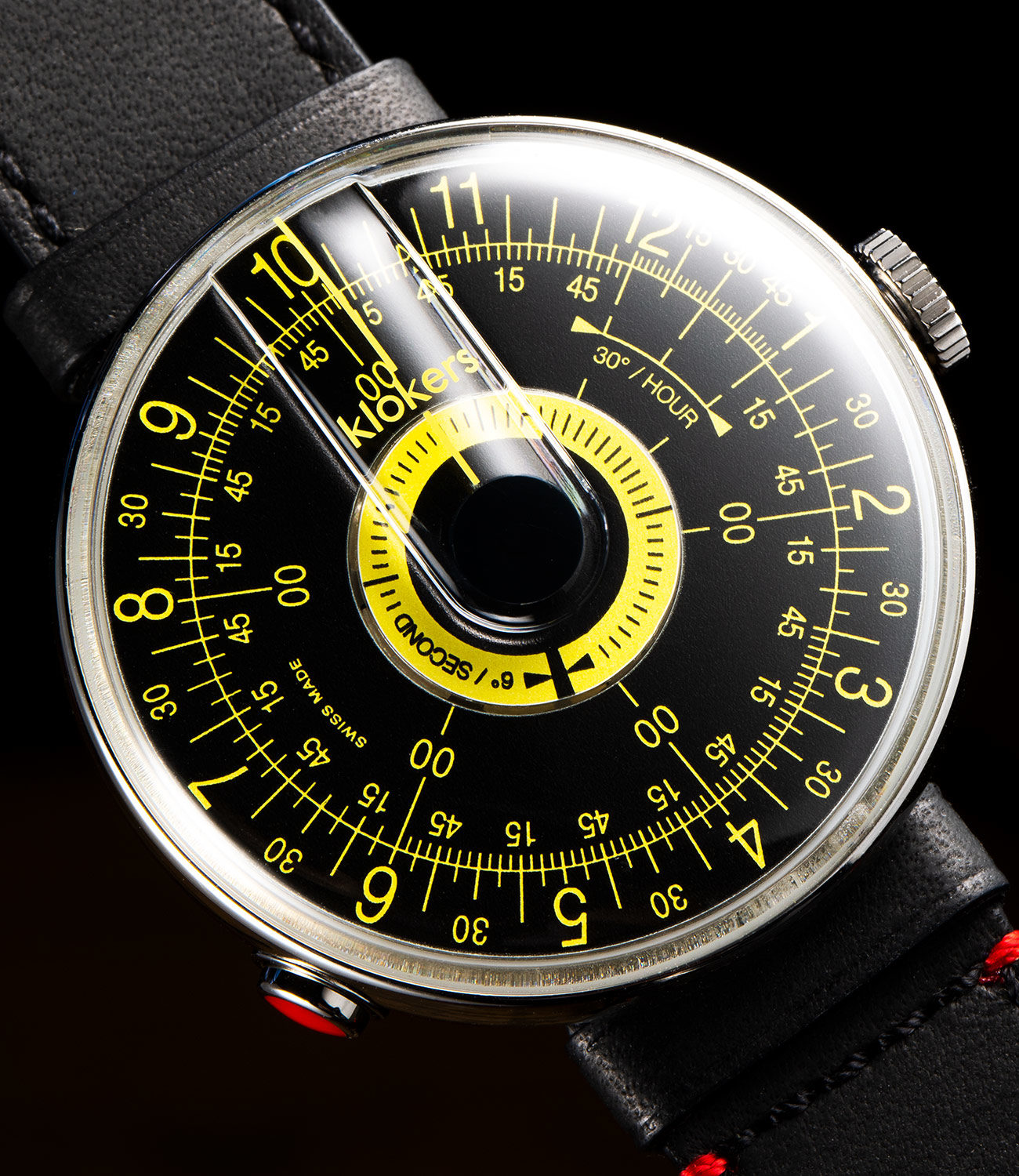From Issue Seven of Gear Patrol Magazine.
Time, too often, gets taken for granted, but spend enough of it around watches and it’s impossible not to pay attention to every second. And though time has mostly been displayed the same way for hundreds of years, some brands are re-thinking what this display can look like. These watches may seem unconventional at first, but look closely — they’re more genius than they appear.
Ochs und Junior Perpetual Calendar
Ochs und Junior, established in 2006 in Lucerne, Switzerland, may be a relative newcomer to the old world of watchmaking, but its chief innovator, Dr. Ludwig Oeschlin, has been developing unique horological designs for more than 30 years. Along with cofounder Beat Weinmann, Ochs und Junior set out to recreate the idea of a complicated watch by heading firmly in the opposite direction — namely, by designing a unique perpetual calendar caliber, a design that typically uses hundreds of parts, with only a base caliber using nine additional and three modified parts – an industry first. “As a small company, you can be radical and do things even if they have to be explained, because there is no basis of comparison,” Weinmann says.
Van Cleef & Arpels Midnight Planétarium
Hamilton’s Jazzmaster Thinline is minimal in its construction, but it features small, tasteful flourishes that echo the styling of mid-century dress watches: a champagne sunray dial; sharp, Though Paris-based Van Cleef & Arpels may be more closely associated today with exquisite jewelry than with timepieces, their watchmaking is equally impressive. In developing the Midnight Planétarium, the maison accurately miniaturized the scale of the heavens into a mechanical device a mere 44mm in diameter. Utilizing a specially-developed movement, the Midnight Planétarium contains a fully-functional representation of six planets moving around the sun, the orbits of which mirror how they appear in the sky. Van Cleef & Arpels president and CEO, Nicolas Bos, says of the design, “In a world where everything goes so fast, this timepiece is an invitation to follow the rhythm of the cosmos.”
Itay Noy Part-Time
The Israeli boutique watchmaker Itay Noy, headquartered in Tel Aviv, has little desire to create timepieces that look or function like any other watch. His Part-Time collection features a dial split in half that only displays info on the 12-hour portion that is currently active, be it day or night. “The concept started as an idea to separate the day into two parts — we eat, we sleep, we go out, we rest part of the day, so the watch is doing the same,” Noy explains. “It’s a different way to show time, an indirect way.” Noy’s goal is to move beyond watches as functional items — he uses them to tell stories and only produces limited numbers, so when a particular model sells out, it’s gone for good.
Klokers KLOK-08
Klokers, based in Annecy-Le-Vieux, France, is a company that launched on Kickstarter in 2015 and raised several times its funding goal. The watches it makes take inspiration from the slide-rule; hours, minutes and seconds are separated onto discs that rotate counterclockwise against a red hash mark on the crystal, rather than by rotating hands that point to a fixed number. Klokers has also designed a proprietary quick-release system for its watch heads that allows them to be mounted on all manner of Klokers-designed straps, freestanding clock holders, pocket watch-style fobs and more, encouraging their customers to view their watches as equal parts utility and fun. “Our target customer loves special products and disruptive designs,” explains the brand’s Sales Director Michel Pescio. “This is why the market has answered very positively to the brand.”
Meistersinger No.3
It wasn’t until the modern era of industrialization that the common person became concerned with the passing of minutes and seconds; before this, clocks appearing in town squares featured only a single hand to display the passing of the hours — more specific information simply wasn’t needed. Manfred Brassler, who founded Meistersinger in Münster, Germany in 2001 based his company on similar ideology that less is more. The Meistersinger No. 3 — along with all of Meistersinger’s designs — embraces timekeeping’s history by using only one hand. Brassler says this simplicity allows us to reflect on what is truly important. “I still find the idea of telling the time like Bach and Handel exceptionally charming to this day,” says Brassler.

